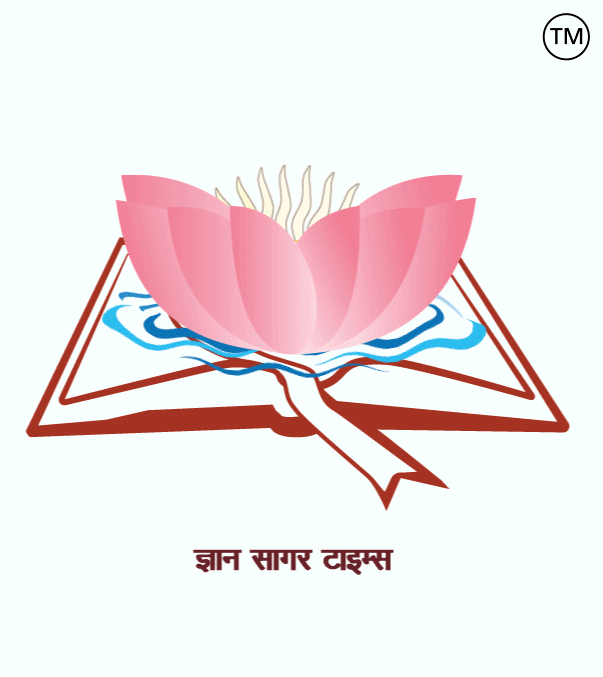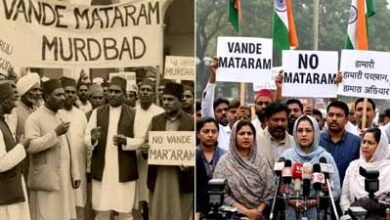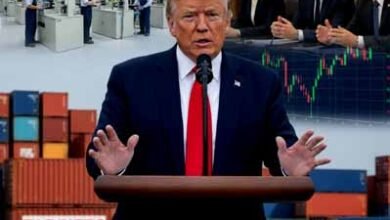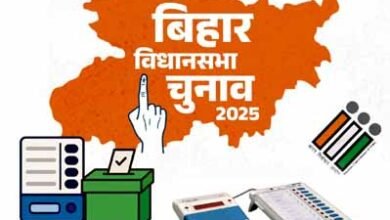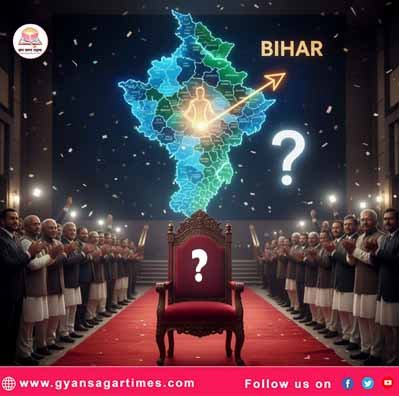
आखिर कौन..?
इतिहास गवाह है कि, बिहार की चुनावी राजनीति हमेशा से ही जटिल और अप्रत्याशित रही है. यहाँ हर चुनाव में जातीय समीकरण, विकास के वादे, और गठबंधन की केमिस्ट्री मिलकर एक ऐसा त्रिकोण बनाती है, जिसका परिणाम अक्सर अनुमानों को धता बता देता है. वर्ष 2025 का विधानसभा चुनाव भी इससे अलग नहीं है, बल्कि इस बार कुछ नए तत्वों ने इसे और अधिक जटिल बना दिया है.
वर्ष 2025 का विधानसभा चुनाव मुख्य रूप से दो प्रमुख गठबंधनों – राष्ट्रीय जनतांत्रिक गठबंधन (NDA) और महागठबंधन (INDIA अलायंस) के बीच केंद्रित है, जिसमें जन सुराज (प्रशांत किशोर की पार्टी) जैसे नए राजनीतिक प्रयोग भी अपनी उपस्थिति दर्ज करा रहे हैं. मुख्यमंत्री नीतीश कुमार, जो लंबे समय से बिहार की राजनीति के केंद्र में रहे हैं, के लिए यह चुनाव उनकी राजनीतिक विरासत की अग्निपरीक्षा है. उनकी “सात निश्चय” जैसी योजनाएँ और महिला सशक्तिकरण का नारा उन्हें महिलाओं और अति-पिछड़े वर्गों (EBC/MBC) के बीच एक मजबूत आधार देता है.
वहीँ, पीएम मोदी की लोकप्रियता और “डबल इंजन” सरकार की अपील भाजपा और एनडीए के लिए प्रमुख ड्राइविंग फोर्स है. पहले चरण के मतदान के बाद, एनडीए को खासकर ग्रामीण सीटों पर शुरुआती बढ़त का दावा किया जा रहा है. एनडीए के लिए सबसे बड़ी चुनौती है सरकार विरोधी लहर, विशेषकर युवाओं में बेरोजगारी को लेकर गहरी नाराजगी.
राजद नेता तेजस्वी यादव ने बेरोजगारी, शिक्षा और स्वास्थ्य के मुद्दों को जोर-शोर से उठाया है, जिससे युवाओं के बीच उनकी स्वीकार्यता बढ़ी है. उनका फोकस सरकार की विफलताओं को उजागर करने पर रहा है. राजद का पारंपरिक मुस्लिम-यादव (MY) समीकरण अभी भी उसकी सबसे बड़ी ताकत है। हालांकि, पहले चरण के मतदान के बाद, इस समीकरण में एनडीए द्वारा सेंधमारी की चर्चा है. महागठबंधन के लिए सबसे बड़ी चुनौती यह सुनिश्चित करना है कि उनके सहयोगी दलों (कांग्रेस और वाम दल) के साथ उनका समन्वय ज़मीन पर भी प्रभावी हो.
प्रशांत किशोर की ‘जन सुराज’ एक विकल्प के रूप में खुद को पेश कर रही है. हालांकि, पहले चरण में उनका प्रभाव सीमित रहा है. उनकी रणनीति पारंपरिक जातिगत राजनीति से ऊपर उठकर मुद्दों पर ध्यान केंद्रित करने की रही है. वे भले ही बड़ी संख्या में सीटें न जीत पाएं, लेकिन उनका अभियान मुख्य दलों के वोट प्रतिशत को प्रभावित करने की क्षमता रखता है.
बिहार की राजनीति जातिगत लामबंदी पर टिकी हुई है. हालांकि, इस बार के चुनाव में विकास, रोज़गार और शिक्षा जैसे मुद्दों ने भी प्रमुखता हासिल की है. मतदाता अब केवल जाति-धर्म के आधार पर नहीं, बल्कि सरकार की जवाबदेही और कामकाज के आधार पर भी निर्णय ले रहे हैं. ज्ञात है कि, पहले चरण में 64.69% का रिकॉर्ड मतदान हुआ, जो वर्ष 2020 के पहले चरण (55.68%) से 8.98% अधिक है। राजनीतिक विशेषज्ञों की राय इस पर बंटी हुई है: – चुनावी विश्लेषकों का मानना है कि यह बढ़ा हुआ मतदान सत्ता विरोधी लहर और बदलाव की इच्छा को दर्शाता है, जो महागठबंधन को लाभ पहुंचा सकता है। वहीं, एनडीए समर्थकों का कहना है कि यह मतदान महिलाओं और अति-पिछड़े वर्ग में सरकार की योजनाओं के प्रति भरोसे को दर्शाता है.
बिहार से बड़े पैमाने पर होने वाला पलायन और बेरोजगारी का मुद्दा युवाओं के बीच भारी असंतोष का कारण बना हुआ है. यह मुद्दा तेजस्वी यादव के पक्ष में माहौल बना सकता है. नीतीश कुमार की नीतियों के कारण महिलाएं एक शांत लेकिन निर्णायक वोटर ब्लॉक बन चुकी हैं. शराबबंदी और अन्य महिला-केंद्रित योजनाओं के कारण इस वर्ग का रुझान अक्सर एनडीए के पक्ष में रहा है, जिस पर सबकी निगाहें हैं.
चुनाव के विभिन्न चरण बिहार के अलग-अलग क्षेत्रों की राजनीतिक नब्ज को दर्शाते हैं। पहले चरण में जिन 121 सीटों पर मतदान हुआ, उनमें से 2020 में महागठबंधन को 61 और एनडीए को 59 सीटें मिली थीं. इस बार, एनडीए को शुरुआती बढ़त मिलने का दावा किया जा रहा है. यह क्षेत्र मुस्लिम बहुल है, जहाँ मुस्लिम वोटों को लुभाने के लिए पार्टियाँ नए चेहरों पर दांव लगा रही हैं. जाति-धर्म के साथ-साथ विकास पर भी ध्यान केंद्रित है। वहीँ, दूसरे चरण में 122 सीटों पर मतदान होना है. यहाँ सभी पार्टियों की साख दांव पर है, और यह चरण चुनावी नतीजे की दिशा तय करने में महत्वपूर्ण होगा.
बिहार चुनाव 2025 में ऊंट की करवट इस बार बहुस्तरीय समीकरणों पर निर्भर करेगी:- यदि महागठबंधन दूसरे चरण में 17 सीटों का अंतर नहीं पाट पाता, तो एनडीए की सरकार बन सकती है. जन सुराज और AIMIM ने अगर अपेक्षित प्रभाव डाला, तो पारंपरिक गठबंधनों को नुकसान हो सकता है. वहीं, क्षेत्रीय मतदाता, विशेषकर मिथिलांचल और सीमांचल, अंतिम निर्णय में निर्णायक साबित होंगे.
फिलहाल, राजनीतिक ऊंट किस करवट बैठेगा, इसका फैसला तो 14 नवंबर (संभावित परिणाम की तारीख) को ही होगा, जब मतपेटियों में बंद जनता का फैसला बाहर आएगा.
संजय कुमार सिंह.
(पोलिटिकल, सहायक एडिटर) ,
ज्ञानसागरटाइम्स.
========== ========= ===========
Aakhir kaun..?

History is witness to the fact that Bihar’s electoral politics has always been complex and unpredictable. In every election here, caste equations, promises of development, and the chemistry of alliances combine to form a triangle whose outcome often defies predictions. The 2025 assembly elections are no different; in fact, some new elements have made it even more complicated this time.
The 2025 assembly elections are primarily centered around two major alliances – the National Democratic Alliance (NDA) and the Mahagathbandhan (INDIA Alliance), with new political experiments like Jan Suraj (Prashant Kishor’s party) also making their presence felt. For Chief Minister Nitish Kumar, who has long been at the center of Bihar politics, this election is a test of his political legacy. His schemes like “Saat Nishchay” and the slogan of women’s empowerment give him a strong base among women and the Extremely Backward Classes (EBC/MBC).
Meanwhile, PM Modi’s popularity and the appeal of a “double engine” government are the main driving forces for the BJP and the NDA. After the first phase of voting, the NDA is claiming an initial lead, especially in rural seats. The biggest challenge for the NDA is the anti-incumbency wave, particularly the deep resentment among the youth regarding unemployment.
RJD leader Tejashwi Yadav has strongly raised issues of unemployment, education, and health, increasing his acceptance among the youth. His focus has been on highlighting the government’s failures. The RJD’s traditional Muslim-Yadav (MY) equation is still its biggest strength. However, after the first phase of voting, there is talk of the NDA making inroads into this equation. The biggest challenge for the Mahagathbandhan is to ensure that their coordination with their alliance partners (Congress and the Left parties) is also effective on the ground.
Prashant Kishor’s ‘Jan Suraj’ is presenting itself as an alternative. However, its impact has been limited in the first phase. His strategy has been to rise above traditional caste politics and focus on issues. They may not win a large number of seats, but their campaign has the potential to influence the vote share of the main parties.
Bihar politics is based on caste mobilization. However, in this election, issues such as development, employment, and education have also gained prominence. Voters are now making decisions not only on the basis of caste and religion but also on the basis of government accountability and performance. It is known that a record 64.69% voter turnout was recorded in the first phase, which is 8.98% higher than the first phase of 2020 (55.68%). Political experts are divided on this: – Election analysts believe that this increased turnout reflects an anti-incumbency wave and a desire for change, which could benefit the Grand Alliance. On the other hand, NDA supporters say that this turnout reflects the trust of women and the extremely backward classes in the government’s schemes.
The issue of large-scale migration and unemployment from Bihar remains a major source of discontent among the youth. This issue could create a favorable atmosphere for Tejashwi Yadav. Due to Nitish Kumar’s policies, women have become a quiet but decisive voter bloc. Due to the liquor ban and other women-centric schemes, this group’s inclination has often been towards the NDA, and everyone is watching them closely.
The different phases of the election reflect the political pulse of different regions of Bihar. Of the 121 seats that went to polls in the first phase, the Grand Alliance won 61 and the NDA won 59 in 2020. This time, the NDA is claiming an early lead. This region is Muslim-majority, where parties are fielding new faces to woo Muslim votes. Along with caste and religion, the focus is also on development. Meanwhile, 122 seats are to go to polls in the second phase. The credibility of all parties is at stake here, and this phase will be crucial in determining the direction of the election results. The outcome of the 2025 Bihar elections will depend on a complex interplay of factors: If the Mahagathbandhan (Grand Alliance) fails to bridge the 17-seat gap in the second phase, the NDA could form the government. If Jan Suraj and AIMIM make a significant impact, it could harm the traditional alliances. Furthermore, regional voters, particularly in Mithilanchal and Seemanchal, will prove decisive in the final outcome.
Currently, the political landscape remains uncertain, and the final decision will only be revealed on November 14th (the likely date of the results), when the people’s verdict, sealed in the ballot boxes, is finally revealed.
Sanjay Kumar Singh.
(Political, Assistant Editor),
Gyansagartimes.

